Disclosure: Meeple Mountain received a free copy of this product in exchange for an honest, unbiased review. This review is not intended to be an endorsement.
In my continued efforts to remind people that there are in fact games older than 15 minutes ago, I stopped by the Red Raven Games booth at Gen Con last year to see if the publisher would provide review samples of their older games.
“Sure,” was the one-word response I got from the staffer at the booth. Like most publishers I meet, they appreciate that some of us want to look back in time to play the games that helped build the foundation for newer games hitting store shelves.
One of the games offered was Near and Far, the sequel to the first game in the “Arzium Storybook Series”, Above and Below. Despite the fact that Near and Far is only seven years old, that fact alone made some people roll their eyes when I tried to table something that ancient. “It can’t be any good,” their eyes seem to say. “When was the Kickstarter?”
[Another note of sadness: so many people think that games only arrive as the result of a crowdfunding handout. “You know, sometimes games are designed, then developed in-house by a studio, then fronted by an organization willing to bet on themselves, then released in a traditional retail format. You know that, right?” This is usually met with a scoff, a person who shouts “Blasphemy!”, then we move on.]Near and Far’s best attribute? It’s better than Above and Below, a game I thought was just OK. Near and Far also offers the kind of flexibility I desperately seek out nowadays, thanks to one of the dirtiest words in board gaming right now:
Campaign.
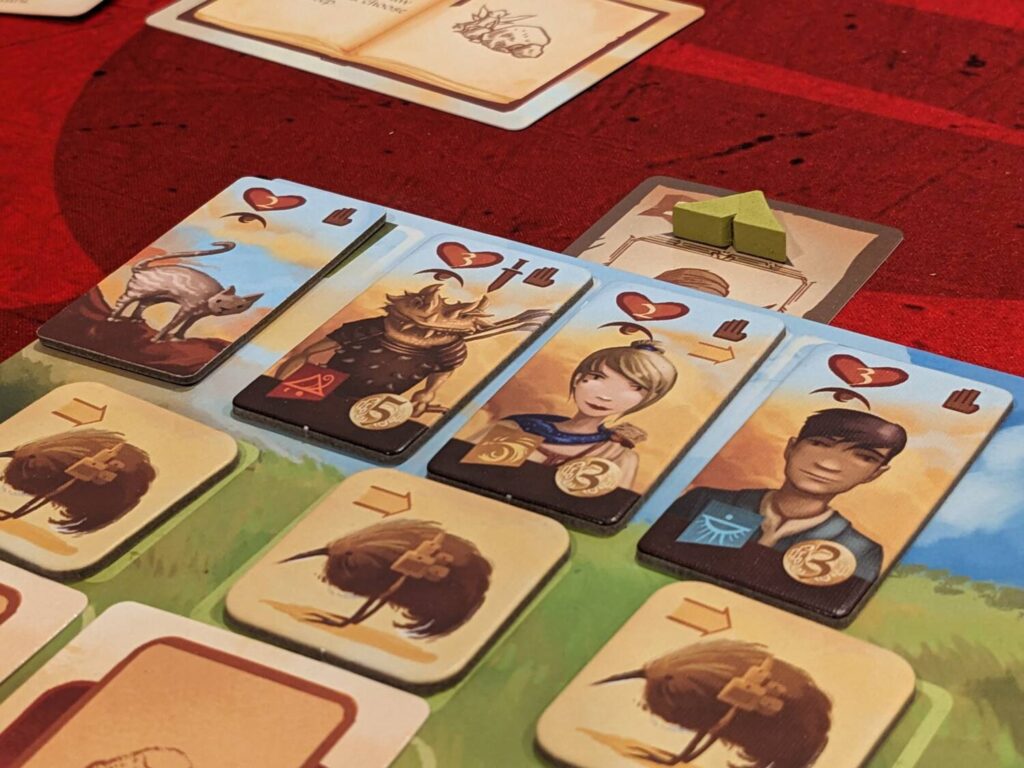
Dungeon Dive (Sorta)
Near and Far is a 10-episode campaign game. (I’ll pause while some of you scurry away in fear before I continue.) It’s a sequel to Above and Below, but players don’t need to have any experience with that first game to enjoy Near and Far. The overview is brief here: players take on the role of adventurers who are searching for the Lost Ruin, which could honestly be anything, really.
Over the course of each adventure and different map arrangements, players will start each game in town gathering stuff—future party members, treasure items, coins, items that can be built later with resources collected from the game world. Then, players take their party to the main adventure map, completing quests for more treasures, gems and coins. Parties also spend the game’s most valuable resource, hearts, to settle camps and valuable trade routes while trying to dodge or defeat threats like bandits and evil robots using a mix of symbol set collection and simple die rolls.
The above paragraph represents about 90% of Near and Far. Here’s what changes: your choice of engagement.
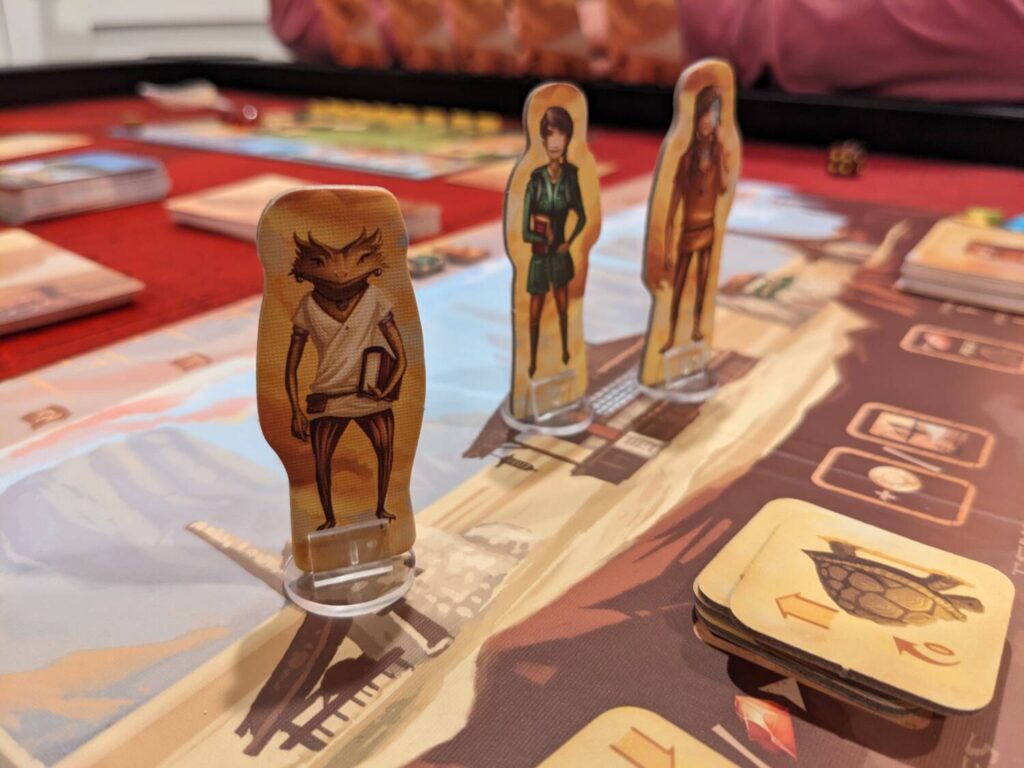
How Much Time Do You Have?
You can play Near and Far 10 times within a campaign using a single character, building on each play with a story read from a massive wire-bound storybook with the same group of people. My findings, based on dozens of bits of anecdotal data from friends, designers, publishers and the internet: it’s damn near impossible to play a campaign game 10 times with the same group of players any more.
Campaign-only products represent the only tabletop category I refuse to cover for Meeple Mountain, because the games deserve coverage from people that can really play the entire campaign, and I simply don’t have a group who wants to play the same game 10 or 15 times. After pushing through campaigns for both Pandemic Legacy: Season One and Clank! Acquisitions Incorporated, I have retired!
Near and Far offers options. You can play it campaign style, with a group over three maps then a run at the finale, or four sessions in total. Or you can play it the way nature intended, over 10 sessions. You can play the first map (or any of the 11 included maps, really) and do quests that can be read from the storybook.
Or you can do what I did—engage with Arcade Mode. It’s beautiful. My wife and I knocked out a two-player game of Near and Far in just under an hour, because in Arcade Mode, the quests are reduced to a series of cards that only require the reader to say something quick: “Fight, combat 8; search, skill 6.” Players check their party stats, roll a die, and get some rewards.
Sure, you miss out on some of the great story content written by designer Ryan Laukat and a pool of other writers, each beautifully credited in the storybook after each quest section. But you don’t miss out on the 15-30 extra minutes of playtime added by having everyone read the quests. In a two-player game, this isn’t a major addition, because only seven quests exist in each two-player game setup.
But at four players, you really notice the time boost.
For this review, I did two of those Arcade Mode plays (one with my wife, one with my 10-year-old) and one single-map scenario with a full complement of four players. The four-player game took about 150 minutes (with two of the four players being completely new to the Arzium Story Series). The game length wasn’t due to our players reading slowly…with 13 quests in a four-player game, there’s just a lot to read in the storybook. Plus, beating a quest might lead to one or two extra skill checks and more story, meaning a player’s turn might take a few minutes to wrap up.
For those who have the time, I love that the options for extended play exist. But for me, particularly when I want to get a game in with family on a weeknight, I love that I can whip out a game of Near and Far in under an hour.
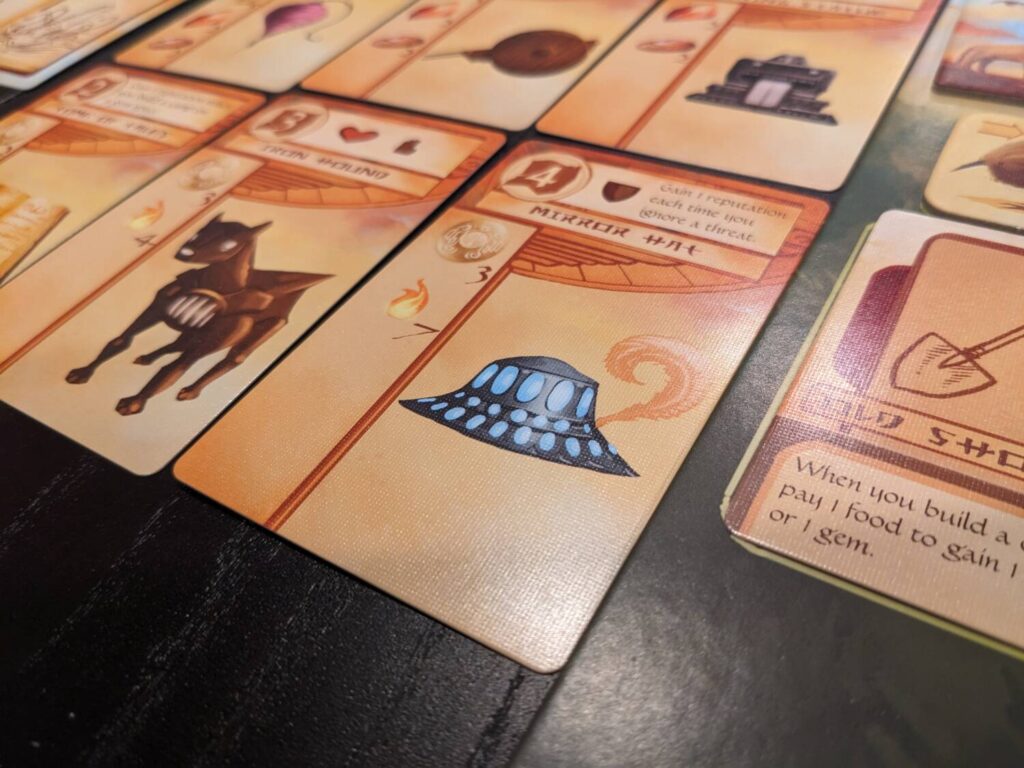
It Does What It Does
Near and Far didn’t knock my socks off with the gameplay. In some ways, I love that, because that leaves it in very solid game territory.
Here’s what I mean. Players will skate around town buying stuff, collecting food, hiring party members. You’ve done this kind of thing in video game RPGs for 40 years (in fact, I might just whip out the Sega RPG classic Phantasy Star after I finish posting this review). But no matter how old the format is, picking party members feels good. Adding treasure to your player board—after hiring “pack birds” to carry it around for you, of course—feels good, even if items like Smoke Bombs and Shovels don’t exactly set the world on fire.
Going out into the world to settle camps and fight threats is similarly feel-good. In many cases, I found that I went out to quest only to settle one camp and get the gold I needed to build one of the cards from my hand, adding an ability or a Combat symbol for future quests. Near and Far uses one of my favorite video game mechanics—the “fast travel” system—to ensure that when players go questing, they can always return to the main town at any time by simply saying so. No need to walk all the way back to the town’s entry point on the map, because who wants to waste that kind of time?
Near and Far crushes these minor quality of life issues. How far can I move? Look at the number of east-facing arrows on your player board. Getting money isn’t nearly the exercise it was in Above and Below, so you can almost always buy what you need with a little grinding and a bit of questing. Save for the use of faction tokens, it’s easy to tell how to buy cards, where to get gems (used for many of the cards that can be built from hand), and how to fight threats.
The back of the manual provides a lot of what players need when they have questions, and the small player aid is enough to get you rolling. The only major thing Near and Far doesn’t have: a score pad, because there are like ten scoring categories and you’ll need to write all of it down to math out final scores. (There is a pencil, used to keep track of things in the character and campaign modes, so it’s really weird that there’s no score pad.)
I would be remiss if I failed to mention the best thing about Near and Far, as well as most of the Red Raven catalog: the artwork. My goodness, Near and Far’s imagery (also provided by Laukat) is fantastic. I continue to adore the direct-facing nature of the pictures on the adventurer tiles, but the whole game is just beautiful to look at. I also love that the food tokens come in sizes of one (bread), three (fish), and five…which, naturally, is represented by bacon.
Because bacon is the best.
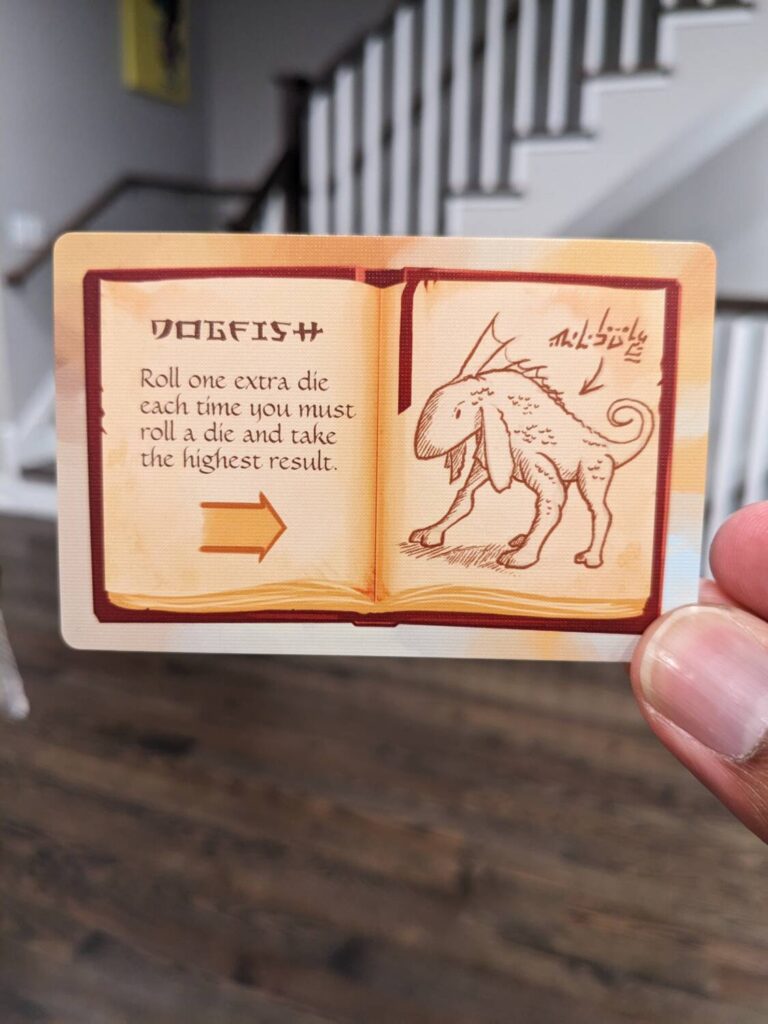
It Still Works!
Seven years later, Near and Far still does what it does well.
Thanks to its flexibility, Near and Far works for almost any audience looking for single and multi-session light RPG experiences. It’s just the right mix of world-building and gameplay. Even in single sessions, you can just tell there’s a lot going on here, and players can choose to run around and fight threats and get treasure and walk away in a tidy format if they want. For those who want more, Laukat has given you access to a lot more if you’d like to ride the wave with a group for months.
My family really enjoyed Near and Far, particularly my wife, who can sometimes be tough to trick into playing games of this type. I will keep my copy around in the hopes that one day, my whole family of four will enjoy diving into a short, character development campaign.
Now I’m looking forward to finishing this trilogy with Now or Never, the third act in the Arzium Storybook Series released a couple of years ago. Looks like I have plans for next year!




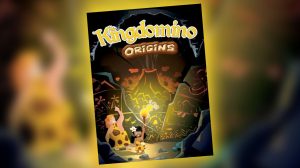
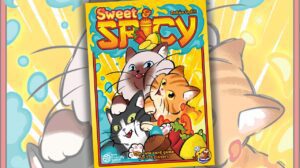






Add Comment